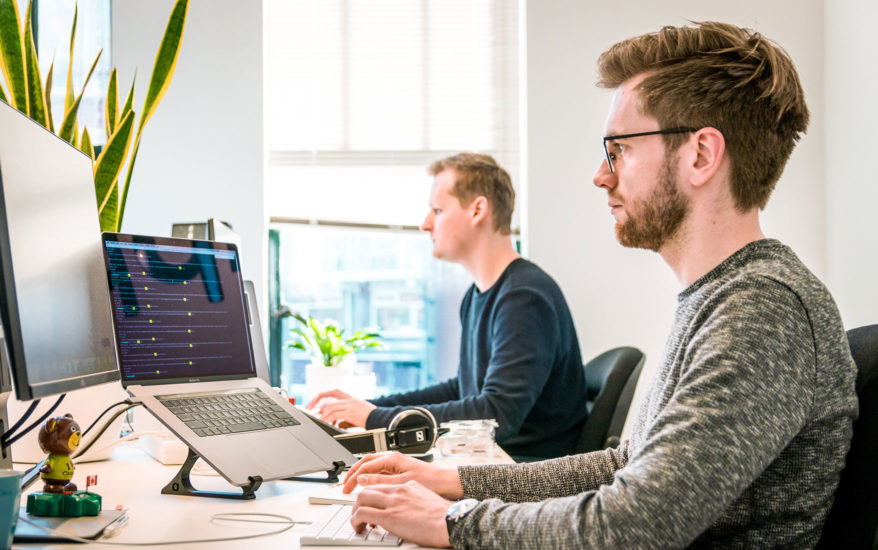
Lockdown measures are easing in some regions across the globe, life post-COVID-19 is seeing employees slowing returning to the workplace to meet and collaborate more effectively, while interestingly, we are seeing the results of flexible working practices having dramatically increased in light of the current situation, remain a staple as we move into our new normal.
So what are the main areas in which this pandemic has been the catalyst for change in the way we work; and what should organizations take note of as we enter this new phase of work and life ahead?
Here are the top six steps:
1. Employees first
COVID-19 has not just hit people in the workplace, it hits them at home. It is a deeply personal crisis. This is much more than the recessionary impact, this is about people’s health and the health of their loved ones. Therefore employers must put the employee first when thinking about how to respond to this change.
This will mean not seeing employees as human resources, but as people who need to be given confidence, support, and who need the business to listen to their needs.
The most similar event I can recall was 911 in the USA. I was living in the US at the time and it did not just hit people in New York and Washington, it hit them everywhere across the country. It felt deeply personal, this is a similar situation.
2. The workspace must be where the employee is
The workplace used to be where the workers came to perform their job function. When they got to their workplace they had a workspace, usually fixed, be that office or permanent desk. Now the workspace is where the employee is. However, a workspace is more than the desk, chair and a monitor. The workspace was in the workplace, a place where workers could collaborate, interact in-person, and a place separate from the home. As business empowers workers to work remotely, businesses will need to think about ways to build the old and positive attributes of the office into the new workplace, while bringing the workspace to the employee.
3. See your employees as people and not job functions
In the 20th Century, we saw employees by their job function, Sales, Marketing, Finance, Operations, and so on. We put each of them into categories with set expectations of how and where they worked. One thing I am certain about in the new paradigm, is we do not know which roles will be most productive working in the workplace, which will work remotely all of the time, mainly remotely, and mainly in the workplace with some remote working. We can make assumptions but I think we are going to be surprised. We are going to find functions we saw as predominantly office-based as people who perform more effectively remotely, and we are going to see people we would naturally see as being able to be remote, benefitting from the socialisation, collaboration and innovation that comes from being in-person. This is going to require business to see workers as people first and their job function second. We will need to gather a lot of empirical data to really understand what works and what doesn’t and that is going to take a number of years to clarify.
4. Consign the processes of the 20th Century to the trash can
None of the changes we need to make will be possible unless we free ourselves from the processes and approaches we learned in the first wave of people moving to offices in masse to perform their jobs. These processes were based on the underlying technologies and demanded people congregate to work together. That is as outmoded as a pony and trap or a steam train. We need to see the business processes for what they are and why they are there, and ask ourselves if these processes are appropriate for the task at hand.
We need to start with productivity, not process.
5. Start with productivity not process
The way to start looking at how to transform is to use a zero base as the starting point. Assume nothing, everything must be justified. Directionally move towards productivity not process. Where are the employees most productive, what do they need? Do they need quiet space to be productive or do they need to collaborate? Is it a combination of the two? If so, how much of each? Assume nothing, investigate everything, measure as much as you can, learn, and adapt. Focus on the organization’s productivity and not on its existing processes.
6. Be passionate about creativity
What will differentiate one business from the other in the future is creativity. The businesses that can understand the paradigm shift in the workplace, listen to the employees, and bring them together to be most creative and productive are the businesses that are prepared for the future. Creativity drives innovation, and as Clayton Christensen wrote about so eloquently, “without innovation our businesses will falter“.
We have to encourage and empower our employees to find new ways to be creative, to be collaborative, and ultimately to use this creativity to drive business innovation.
*Thank you to Mike Pilcher, Chief Sales Officer, Condeco, for writing this article.



